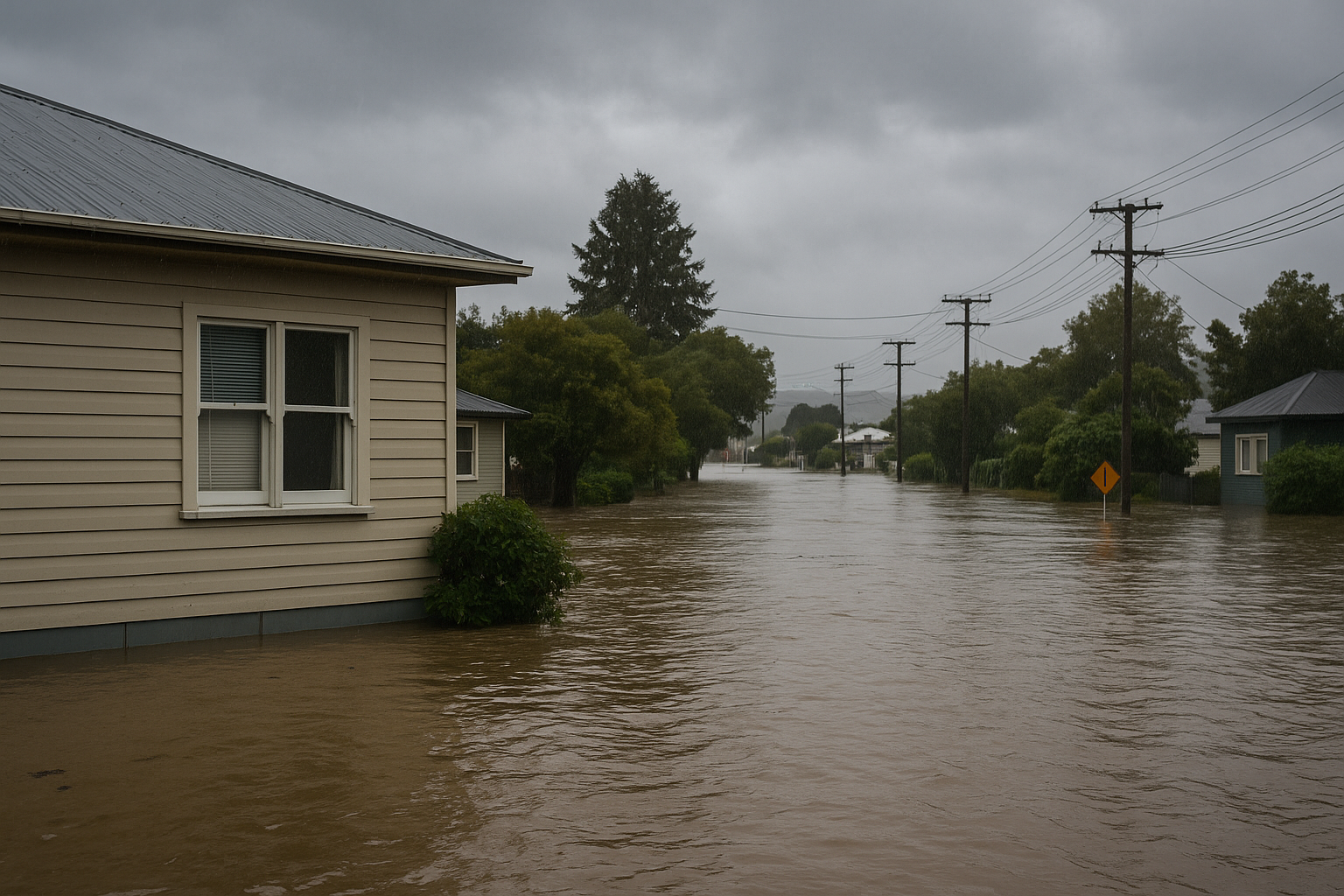Deadly Flash Floods in Asia and U.S. Underscore Urgent Need for Early Warnings
“Flash floods are not new, but they are becoming more intense and frequent due to climate change and urbanization,” said Dr. Stefan Uhlenbrook, WMO’s Director of Hydrology, Water and Cryosphere.

The month of July 2025 witnessed a devastating spate of flash floods and major flood disasters across Asia and the United States, leading to hundreds of deaths, mass displacement, infrastructure collapse, and staggering economic losses. These catastrophic events serve as a grim reminder of the growing threat of climate-induced extreme weather and the persistent challenge of delivering timely early warnings to those at risk.
According to the World Meteorological Organization (WMO), the frequency, intensity, and unpredictability of flash floods are increasing rapidly due to a combination of factors—chief among them being global warming, urban sprawl, and land-use changes that compromise natural drainage systems.
“Flash floods are not new, but they are becoming more intense and frequent due to climate change and urbanization,” said Dr. Stefan Uhlenbrook, WMO’s Director of Hydrology, Water and Cryosphere. “Rising temperatures are allowing the atmosphere to hold more water vapor, which increases the risk of extreme rainfall events.”
Asia: Monsoon Mayhem and Glacial Meltdowns
India, Nepal, and Pakistan: Monsoon Fury
In India, the monsoon deluge in July destroyed infrastructure, severed transport links, and triggered widespread landslides and flash floods. The India Meteorological Department warned of continued extreme rainfall across several states.
Pakistan declared a state of emergency in the hardest-hit regions, deploying army helicopters for rescue and relief. An exceptional flood threat was declared in the upper catchments of the Jhelum River, exacerbating the crisis.
Republic of Korea: Record Rainfall and Landslides
Between 16 and 20 July, South Korea’s southern regions recorded rainfall exceeding 115 mm/hour. With 800 mm of rain in just a few days, the mountainous Sancheong area—already vulnerable due to wildfire deforestation—was devastated by landslides. The government declared special disaster zones, with at least 18 confirmed deaths and over 13,000 evacuations.
Nepal: Glacier-Fueled Floods
On 7 July, Nepal’s Rasuwa district was ravaged by a glacial lake outburst flood (GLOF), reportedly triggered by the sudden collapse of a supraglacial lake in Tibet. The flood killed 7 people, left 19 missing, destroyed hydropower plants and bridges, and disrupted trade.
This was not an isolated incident. In May and June 2025 alone, three glacial-origin floods hit Nepal, Afghanistan, and Pakistan. On 7 July, Nepal was struck by two separate GLOFs in Rasuwa and Upper Mustang—an alarming indicator of the increasing frequency of glacier-related hazards.
“Glacial origin floods that used to occur once every 5–10 years are now happening multiple times within a few months,” said scientists from the International Centre for Integrated Mountain Development (ICIMOD), who are supporting WMO during the International Year of Glaciers’ Preservation.
United States: Tragedy in Texas Hill Country
In the U.S. state of Texas, flash floods in the Hill Country region on 4 July led to the deaths of over 100 people, including many children attending summer camps. Within 45 minutes, the Guadalupe River surged by 26 feet (nearly 8 meters) after 10–18 inches of rain fell in a few hours.
Though the National Weather Service (NWS) issued alerts over 12 hours in advance, including a flash flood emergency, the disaster unfolded at 4 a.m., while most people were asleep and no siren systems were installed in the affected camps. This tragic lapse exposed the limitations of warning dissemination, even in technologically advanced countries.
Flash Floods: The Deadliest Water Hazard
According to WMO, flash floods account for 85% of all flooding events and have the highest mortality rate. Unlike riverine floods, flash floods strike within hours of heavy rainfall or dam bursts, offering little to no time for evacuation.
WMO data reveals that 1.81 billion people—nearly 23% of the global population—are exposed to 1-in-100-year flood events, with 89% living in low- and middle-income countries.
“Accurate, timely flash flood forecasting and community preparedness are crucial. These events escalate quickly, often without warning, especially in urban or mountainous areas,” said Hwirin Kim, WMO Chief of Hydrological Water Resources Services.
Economic Toll and Historical Comparisons
Recent catastrophic flood events reflect the enormous economic burden of poor preparedness and inadequate early warning systems:
-
2020 South Asian Floods: 6,511 fatalities, $105 billion in damages.
-
2022 Pakistan Floods: 1,700+ deaths, 33 million affected, $40 billion in losses.
-
2024 Floods in Europe, Middle East, and Africa: $36 billion in damages.
WMO Action: Technology, Training, and Coordination
To mitigate future disasters, WMO is intensifying efforts under several frameworks:
1. Flash Flood Guidance System (FFGS)
Operated in over 70 countries, FFGS provides real-time warnings by combining satellite data, radar, and high-resolution weather models to alert communities of incoming floods. It is being transitioned into a globally governed, Member-led system.
2. Early Warnings for All Initiative
WMO’s flagship campaign focuses on delivering multi-hazard early warning systems worldwide. Flash flood alerts are central to this effort, especially in areas with low disaster literacy and limited infrastructure.
3. Competency-Based Training
WMO has certified hundreds of meteorologists and hydrologists under its Flash Flood Forecasting Competency Framework, enabling real-time collaboration between forecast centers and disaster management agencies.
Urgent Call for Action
The July floods are a clarion call to governments and communities: technology alone is not enough. Without community outreach, infrastructure investment, and responsive governance, even the best warnings can fail.
As climate change accelerates, the world faces a future of more intense and more frequent flash floods. The solution lies in anticipation, not reaction—in building systems that not only predict danger but ensure those at risk receive, understand, and act upon warnings in time.
ALSO READ
Strengthening Ties: India and Cuba Collaborate on Key Sectors
Steady Rise in India's Automobile Sales Amid Economic Challenges
Historic Triumph: Shubman Gill Leads India to Victory at Edgbaston
Akash Deep's Brilliant Bowling Clinches Historic Win for India
Transforming India's Chemicals Industry: NITI Aayog's Roadmap for Global Leadership










